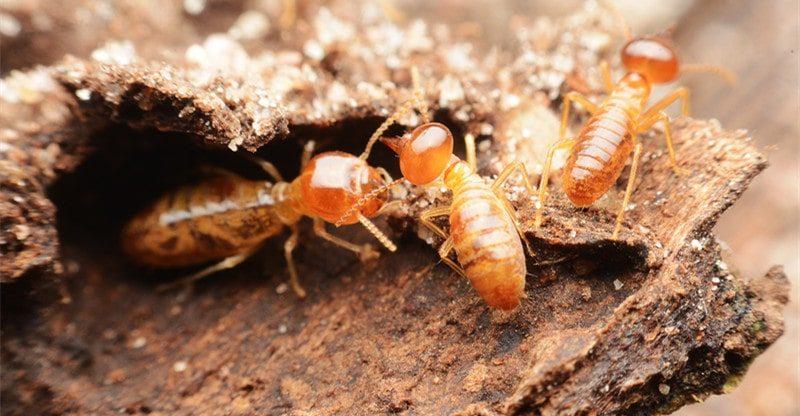How to Identify Termites in Virginia
Termites are a common problem in Virginia homes. But why? The answer is more complicated than you might think. These sneaky pests thrive in warm, humid environments, and with our abundance of wood-based construction, Virginia homes are the perfect breeding ground.
The most common species of termites in Virginia are:
- Eastern Subterranean Termites
- Formosan Termites
- Drywood Termites
- Conehead Termites
Termites can wreak significant havoc on a home before the owner even realizes it. If you think your house may have termites, it’s crucial to identify the issue to prevent further damage. Unlike other pests, termites leave distinctive signs that can be fairly easy to spot. Read on to learn more about the signs of termites and how to help prevent them.
Signs of a Termite Infestation
It’s vital to know the signs of a termite infestation so that you can contact a professional termite exterminator and have them eliminated from your home. If termites are actively feeding on your home, you may spot a few of the following signs:
- Hollow Wood – Termites can eat away at the inside of wood, leaving the exterior intact but making it weak and hollow. Wood damage can initially appear as water damage, but closer inspection may reveal the presence of termites.
- Mud tubes – You may find small tunnels made of soil and wood that connect the termite colony to their food source.
- Discarded Wings – When termites swarm, they shed their wings, and these can be a clear indicator of an infestation.
- Termite droppings – also known as frass, are a clear indication of termite activity. Termites excrete small, wood-colored pellets, and they can often be found near the entrance of the termite colony.
Tips for Termite Prevention
Termites adore moist environments. To avoid attracting them to your home, ensure water isn’t accumulating around your house’s foundation. Trim overgrown vegetation to allow the sun to dry out the soil, and fix leaks immediately. Using dehumidifiers and air conditioners inside your home can also reduce moisture levels.
Next, eliminate any wood-to-soil contact around your property. Termites can easily travel from the ground to your home through wooden posts or other structures that touch the soil. Use concrete or metal barriers to separate wood from the soil.
In addition, avoid storing firewood or other wooden materials near your foundation because this is an easy target for termites. We recommend keeping any stored wood materials at least 20 feet away from your home.
Differentiating Between Termite and Water Damage
Many homeowners confuse termite damage with water damage. Some signs of termite damage include:
- Warped floors
- Swollen ceilings
- Sticking doors or windows
In contrast, water damage leads to moistened surfaces. You may identify water damage through the presence of mold or mildew as well as a persistent musty odor. Flooring may begin to warp or buckle, and paint as well as wallpaper could begin to peel off the walls. Additionally, stains and discoloration could appear on walls, ceilings, and floors.
Termites usually consume wet wood or wood with high levels of moisture content. You may notice soft or mushy wood and hear a hollow sound when you tap it. If you find any of these issues, particularly in areas where water damage is unlikely, it’s important to get an inspection by a professional termite exterminator right away. Early action can save you thousands of dollars in repair costs.
Professional Termite Control
If you suspect your Virginia home has termites, it’s crucial to contact a professional termite treatment provider such as RichPro Pest Management. A thorough inspection and expert treatment can eradicate the current infestation and prevent future ones from occurring. The use of improper chemicals and DIY solutions can worsen the problem and cause harm to people, animals, and plants.



